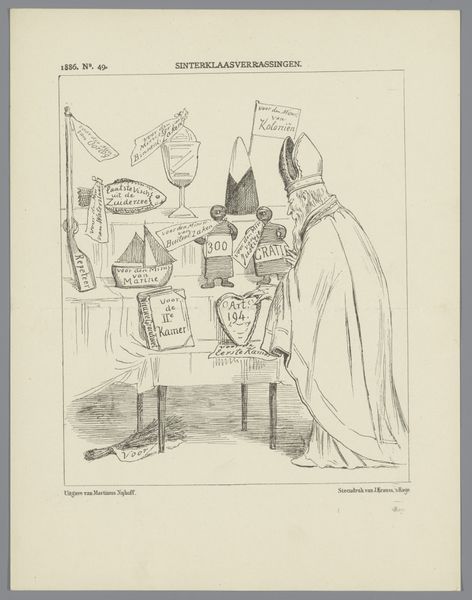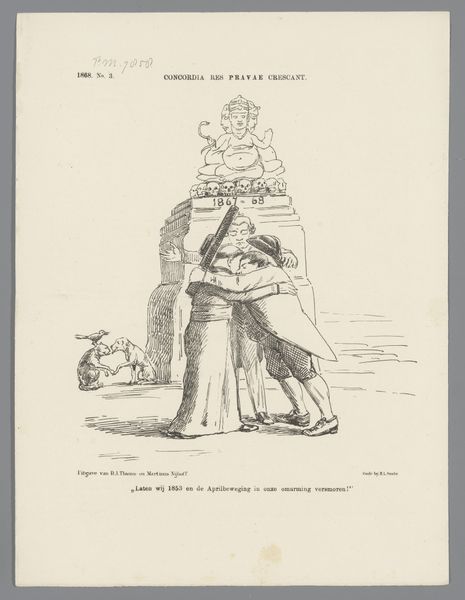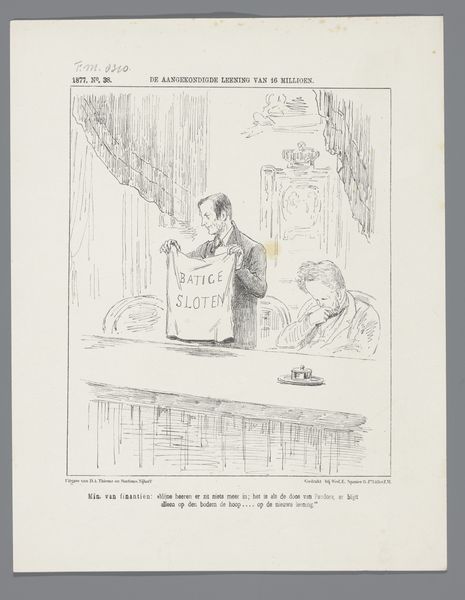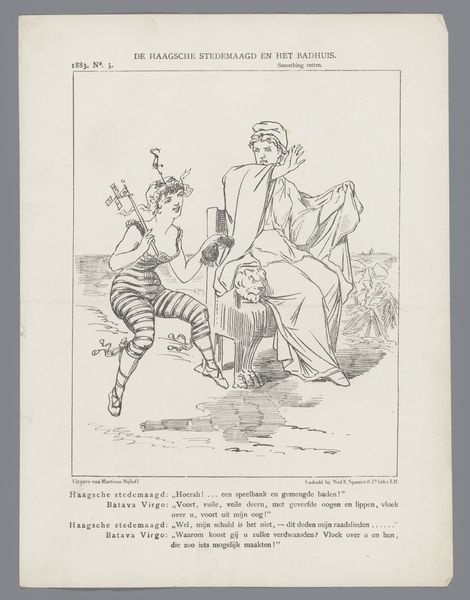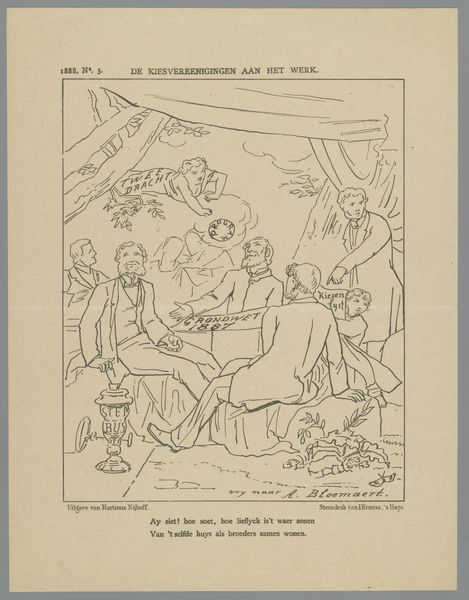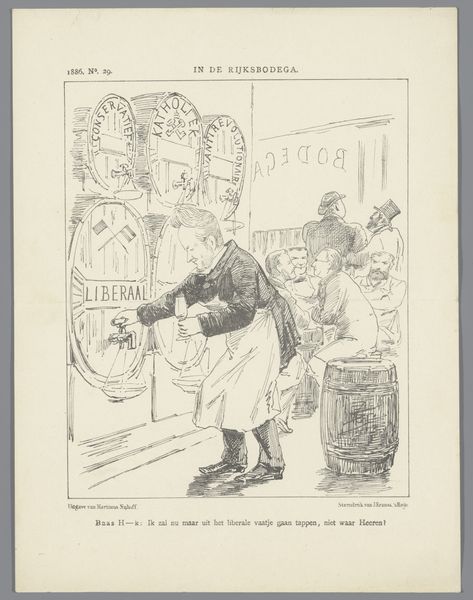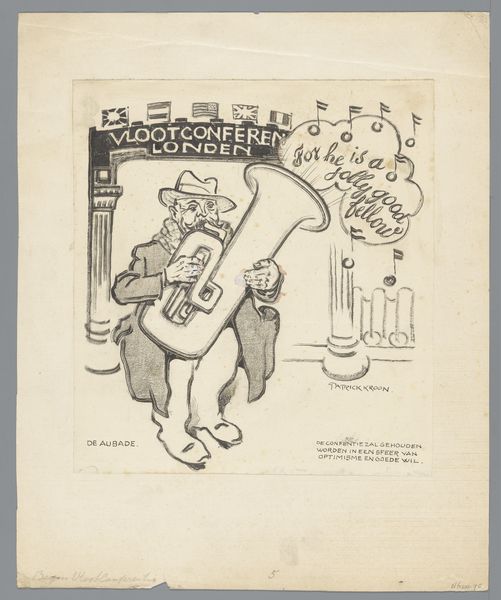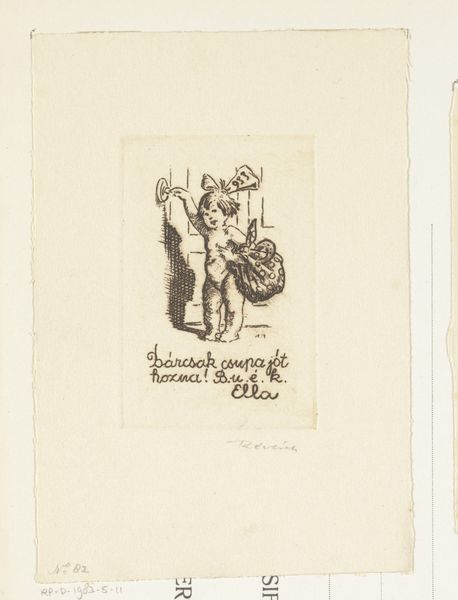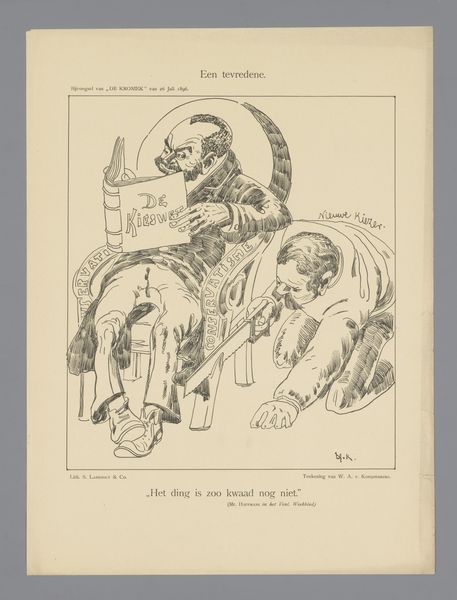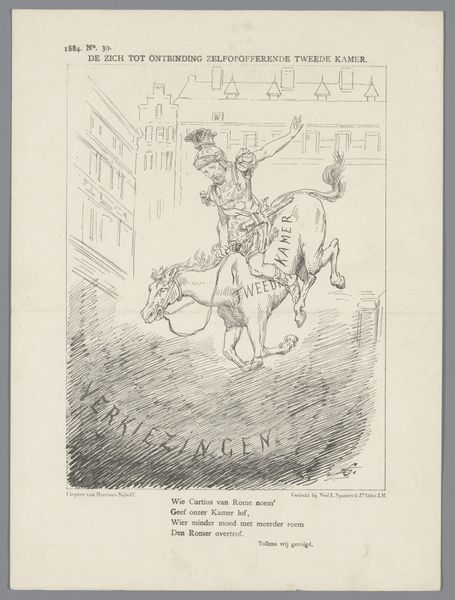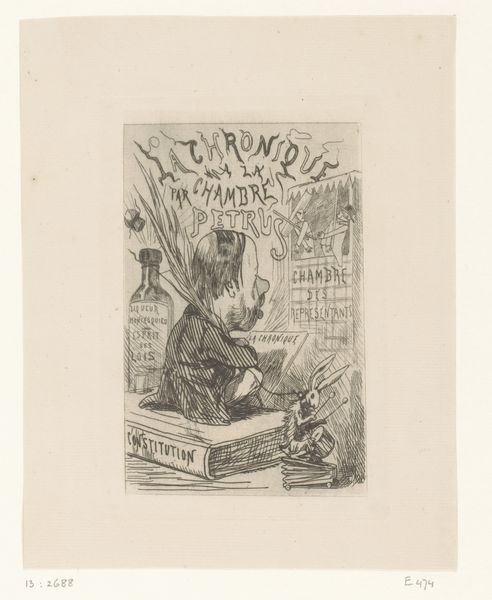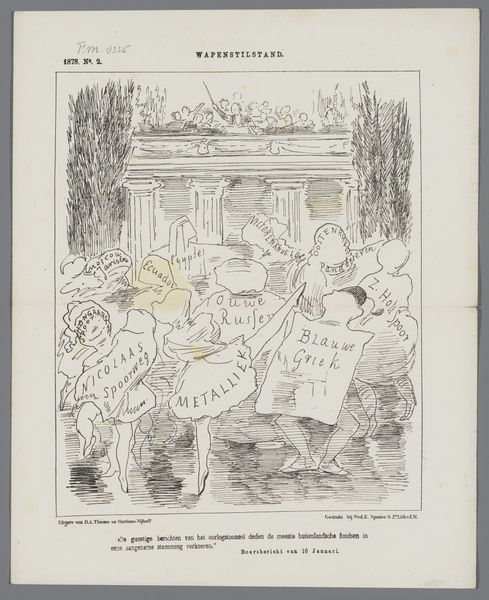
drawing, ink
#
drawing
#
narrative-art
#
caricature
#
ink
Dimensions: height 318 mm, width 248 mm
Copyright: Rijks Museum: Open Domain
Curator: So, let's delve into Patricq Kroon's 1930 ink drawing, "Vredesconferentie van Genève" – that's "Peace Conference of Geneva." What strikes you first about it? Editor: Well, there's definitely a critical tone, maybe even a bit cynical. The figure looks like she’s reluctantly lifting the lid off a pot labelled “Geneva 1930,” and smoke is billowing out with words like "mistrust" and "protectionism." It doesn't exactly scream "peace." What do you see in it? Curator: Absolutely, your observation is spot on. The cartoon appeared amidst the wave of peace conferences held in Geneva in the 1930s to consolidate power. But does it actually solidify global relationships? Given the drawing emerged during the Interwar period, with the rise of nationalism and economic protectionism, one can argue it serves as a critical commentary on the very notion of international cooperation. Look at the words coming out of the pot. How do they intersect with each other? Editor: I see. “Mistrust,” "own interest," and "protectionism." It’s like Kroon is saying that these supposed peace talks are just a smokescreen for underlying nationalistic and economic agendas. Is the cloaked figure Europe? Curator: Indeed, and Kroon subtly hints at the fragility of the entire European project symbolized by the letters "EU" at the bottom. He implies that inherent self-interests might ultimately sabotage the chances for lasting peace and trade agreements. Note how the lid covers up most of the "peace". The doves appear ghostly, barely present. Editor: I see your point. This is far more than a simple political cartoon. It reflects deep anxieties about the future of Europe and the very real potential for a relapse into conflict. I never thought about the economic angles before, it provides a deeper understanding. Curator: Precisely! By considering the historical and political backdrop, we see Kroon's drawing not just as a caricature, but as a sharp critique of power dynamics and a plea to consider multiple viewpoints in historical interpretations. Editor: Definitely learned a lot from this. Seeing the context of Interwar period in this artwork really opens your eyes on the complex relationships behind historical political actions.
Comments
No comments
Be the first to comment and join the conversation on the ultimate creative platform.
